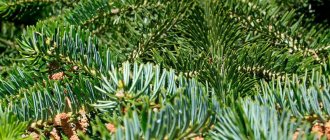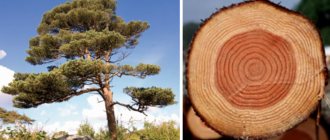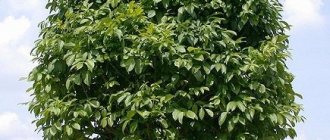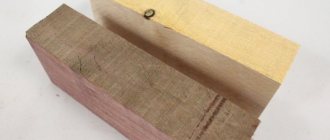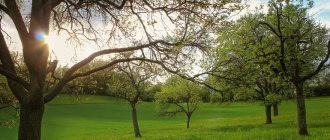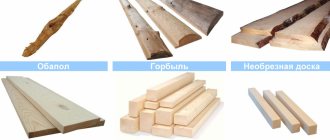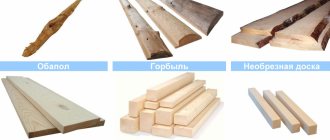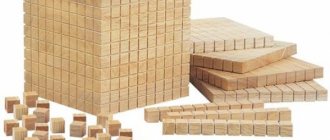Oak lives in the wild for 350-400 years. Centenarians can live up to two thousand years.
It is not for nothing that oak is considered the standard of wisdom and longevity. Under favorable conditions, the tree lives for a very long time. This is due to the long process of its growth and development. The oak grows actively for 100-150 years, then throughout its life its trunk thickens and the root system becomes more powerful.
Two long-lived oak trees are world famous. One grows in Palestine and is about two thousand years old. Legend says that it was under it that the event described in the Bible took place: Patriarch Abraham accepted God. The second elder is located on the territory of Lithuania. He is a century older than his brother.
How long an oak tree lives is determined mainly by external conditions. If they meet the needs of the tree and do not compromise safety, it will live for thousands of years.
Individual and colonial trees
Trees, like any living organism, die over time. The life of these plants is influenced not only by their breed, but also by climate and living conditions. It is obvious that a tree adapted to conditions of sufficient humidity in Africa will quickly wither. Scientists have found that some plants can exist for a long time in colonies, when the old ancestor organism vegetatively reproduced with its clones. This form of existence significantly extends the life of the tree. For example, in Sweden, the Old Tikko spruce grows, which is over 9,500 years old, although the age of the trunk itself is estimated to be only a few hundred years. However, using radiocarbon dating of the root system under the tree, roots were identified that were 375, 5,660, 9,000 and 9,550 years old.
Old Tikko
Through the process by which a branch comes into contact with the ground and new roots emerge (vegetative propagation), the root system can grow a new trunk.
For example, in the state of Utah (USA) there grows a clonal colony of "Pando" (many trees united by a common root system) aspen poplar, which is estimated to be about 80,000 years old.
Grove "Pando"
Accordingly, a tree that is not colonial is individual, i.e. the root system and trunk are of the same age.
Beautiful birch
Besides oak, one of the most common trees in the northern hemisphere is birch. It belongs to the deciduous genus, the Birch family. It occupies one of the first places in beauty; its graceful white trunk attracts with its stream of emanating light. Birch occupies a special place in the culture of Slavic, Finnish and Scandinavian ancient tribes. For example, among the Slavs this tree protects and protects from evil spirits. Birch is famous not only for its beauty, but also for its benefits and healing properties. Birch sap, which is collected in early spring, has a large amount of minerals and is beneficial for humans. Birch buds contain a large amount of essential oil, so they are used as a diaphoretic and blood purifier. Birch is the main raw material for producing charcoal, which is used in everyday life; in addition, durable wood is obtained from birch. In total, about 120 species of birch trees are known. The most common is downy birch; in addition, yellow and weeping birch are often found. These species reach an average of 25 - 30 meters in height and up to 80 centimeters in diameter. Walking through a birch grove and admiring such beauties, you inevitably wonder how many years trees live?
Which tree is the oldest on Earth?
Thus, it was possible to find the oldest tree on the planet and determine the life span of large plants. The record holder among singles was considered to be a bristlecone pine named Methuselah (that was the name of the biblical centenarian). This tree, growing in the mountains of California, is more than 4,850 years old. The exact location of the record holder is classified to protect it from the influx of tourists. Surprisingly, harsh conditions - lack of nutrients, temperature changes, strong winds - protect trees from viruses. Experts believe that the record holder will be able to live for at least another 500 years. True, a new long-liver recently appeared - in the same Inyo County, the same bristlecone pine, 5,070 years old, was found, but this has not yet been confirmed.
Bristlecone pine
Let us repeat that among clone colonies the record belongs to 47 thousand poplars growing on an area of 46 hectares in the American state of Utah. And although the above-ground trees here are no older than 130 years, the colony itself is about 80 thousand years old.
Oak tree lifespan
English oak. General form. Photo: Jean-Pol GRANDMONT / ru.wikipedia.org
English oak. General form. Photo: Vladimir Papchenkov, 2011 / plantarium.ru
English oak. View in autumn.
English oak. View in winter.
English oak. Structure.
Young tree. Photo: Alexey Malinovskikh, 2014 / plantarium.ru
English oak. Male flowers.
English oak. Female flowers. Photo: Sergey Appolonov, 2008 / plantarium.ru
English oak. Leaf on top.
English oak. Sheet below.
English oak. Unripe fruits.
English oak. Ripe fruits.
English oak. Trunk.
English oak. Bark.
general information
- Quercus longaeva Salisb.
- Quercus pedunculata Ehrh.
Useful qualities/functions
Growing conditions
Agricultural technology
Collection, storage and processing
Varieties and forms
- The early form is summer oak, summer grass (Quercus robur var.praecox Czem). Early oak leaves bloom in April and fall off for the winter.
- Late form - winter oak, buzzard (Quercus robur var.tardiflora Czem.). Late oak leaves bloom two to three weeks later (in May) and remain on young plants for the winter. In addition, late oak is more cold-resistant and has heavier and stronger wood.
Subspecies of English oak:
- Imeretian oak (Quercus imeretina/Quercus robur subsp. imeretina Steven ex Woronow)
- Leg oak/Long-legged oak/Erucifolia oak (Quercus pedunculiflora K. Koch)
- Quercus robur subsp. brutia (Ten.) O.Schwarz
- Quercus robur L. subsp. robur
Decorative forms (varieties) of English oak:
- Fastagiata - height 15-20 m, columnar crown;
- Fastagiata Koster - up to 12-15 m, with age it remains compact, narrowly columnar and closed;
- Concordia - slow-growing tree, spherical crown, golden yellow foliage;
- Castle Howard - slow growing, 5-10 m tall, with red shoots and variegated white-green leaves (zone 5a);
- Furst Schwarzenberg - slow-growing, 5-10 m tall, with pink-purple shoots and multi-colored leaves - green with white speckles, young ones - almost completely yellowish (zone 5a);
- Pyramidal - up to 8.5 m high.
- f. pendula - weeping;
- f. argenteo-marginata - white-edged;
- f. atro-purpurea - dark purple;
- f. marmorata - marble;
- f. tricolor - three-color;
- f. aureo-variegata - golden-variegated.
How many years do fruit trees live?
Unfortunately, fruit trees that delight us with fruits cannot be called long-livers. In the wild, an apple tree can live up to 200 years, but in a garden a tree will live no more than 50 years, usually up to 30. The situation is similar with plums. But a pear, with good care, can live in the garden for up to 200 years. The lifespan of a peach is much more modest. The tree will live only 20 years, and will bear fruit even less.
The deciduous trees around us generally live longer. The beloved birch tree grows here, in a suitable climate, for up to 300 years. But aspen and rowan trees live up to 100 years.
What does English oak look like?
Oak is a powerful tree with a mighty trunk. It immediately stands out from other plants with its voluminous, spreading crown. It reaches a height of 40 meters.
The most famous species is common or pedunculate oak.
How long does an oak tree live?
Usually the lifespan of a mighty tree is about 300 years;
some specimens reach a more noble age, measured in millennia.
In this case, growth in height usually stops after two hundred years of life. The width of the tree continues to slowly but constantly increase. The diameter can reach up to one and a half meters.
Oak bark is quite thick and durable, dark brown in color. It is covered with wrinkles and cracks.
A mighty tree cannot do without the color of the sun and is drawn to it. Because of this, the branches grow in different directions, acquiring bizarre shapes. The older the oak, the more bends, curves, curved lines.
The common oak is a deciduous tree, its height reaches 50 meters, the girth of the trunk is up to 2 meters. It grows upward for an average of 200 years, then expands for the rest of its life. Using this feature, you can determine approximately how old the tree is. The lifespan of individual individuals is up to 500, or even more years.
The oldest representative of the species grows in Lithuania near the village of Stemluzh. Scientists were able to determine the approximate age of the centenarian - about 2000 years; historical documents contain his description. The Stemluzh oak tree still blooms and periodically bears fruit.
The oak root system has a main core that goes deep into the ground, due to which the tree receives reliable support and high vitality. Over time, lateral root processes of the first, second, third, etc., form and develop. order, the system takes on a spherical shape. The longest stem of a mature tree can be located 20 meters above the ground or deeper.
A young plant has an even light gray bark with a smooth surface; with age it darkens and thickens up to 10 cm by the end of the oak’s life, becoming covered with deep cracks.
The crown has a pyramidal structure, wide, spreading. A tree with strong branches growing alternately on a powerful trunk.
Everyone knows what an oak leaf looks like in Russia and in the world: lobed with a characteristic jagged-rounded edge of a simple shape. The veins protrude slightly from the main plane.
Oak fruits are acorns. They ripen by mid-autumn in September-October. They have a round, elongated shape, brownish-brown, sometimes yellowish in color. The fruit is recessed into a flat plush on a short stalk.
The buds are brown, scaly, ovoid with a pointed tip. The scales have a ciliated edge.
Oak fruits are set in the spring with the arrival of warmth in April-May. Flowering occurs at the same time as the leaves bloom. Flowers of different sexes:
- Women's reddish tint with a short leg;
- Men's have the appearance of yellow-green dangling earrings.
There are 2 types of wood: early and late. The early species blooms leaves in April-May, sheds them in mid-autumn until October. Flowering occurs at the same time. The late representative becomes active 2-3 weeks later than its counterpart; often the leaves remain on the branches throughout the winter and fall off in the spring with the swelling of new buds. Their appearance is practically no different.
The common oak bears fruit every 4-5 years after reaching an age of over 50 years.
Spreading
The plant does not like frost, so it is practically not found in northern latitudes. It forms forests in the middle and southern regions of Russia from the Urals to the Caucasus, where its homeland is located. It grows naturally in Western Europe, Western Asia and Africa.
Humans spread the species in different parts of the Earth, but in unusual climatic conditions the tree develops worse: the trunk grows slowly, the height does not exceed 20 meters, it bears fruit unstably, and often the oak wood is not of high quality. Oak trees are used to create interesting park compositions, decorate alleys and populate forest belts.
Under normal conditions, the common species grows in river valleys and forms mixed forests. The breed favorably coexists with representatives of coniferous and deciduous trees: pine, spruce, hornbeam, birch, beech, ash, maple.
Free-standing individuals are often found.
Climate and soil
The family loves a temperate climate: normal humidity, average temperatures. Mixed forests of Russia are the optimal habitat for oak trees.
For a comfortable life, soils rich in minerals and organic fertilizers are required. Wet and deep gray loams of forests are optimal for tree development. In such areas, the life expectancy of the oak is maximum; the trunk actively grows and remains alive for a long time.
Long-lived trees
Of course, the longest-livers in this series are oak trees, which live 400 years or more, up to 1,500 years. But it is no coincidence that coniferous species are considered the record holders. All thanks to their unpretentiousness, these trees grow in any soil. An ordinary pine can live 400-500 years, like juniper, and spruce - 500-600, cedars - up to 1,000 years, bristlecone pine - over 5,000 years. Giant trees are also among the long-livers. Thus, baobab and yew can live up to 4,000 years, as can sequoiadendron (mammoth tree). Several such trees have been found in the Sierra Nevada Mountains in California, whose age exceeds 3,000 years.
Sequoiadendron
Human life lasts longer than most living organisms on the planet. But we are no match for trees. They grow and develop much more slowly, which allows them to exist for centuries and millennia. Just think, trees that lived during the times of Ancient Egypt and Ancient Rome have been preserved on Earth; we will leave, and these plants will be able to see a future unattainable to us.
How long does a birch, oak, linden, maple live?
Birch The age limit of most birches does not exceed 100-120 years. In our forests, not one type of birch grows, but two. These are warty or drooping birch and downy birch. The first lives in relatively dry forests - on the edges, overgrown fields and pastures, and the second is a mainly swamp species. However, both species often grow together and it is not easy to distinguish them - except that the leaves of the warty birch are sharper, and the leaves of the downy birch (as you might guess) are pubescent. The trunk of the downy birch is smoother and whiter, but the warty birch lives almost twice as long, up to 120 years. Yellow birch - 150 years, some trees reach 300 years.
Linden In our country, more than ten species of linden grow, but the most common in the middle zone is the small-leaved linden. She lives on average 300-400 years, but some centenarians sometimes live twice as long. Reaching a trunk diameter of more than a meter, small-leaved linden rises to a height of up to thirty meters.
Common maple – 500 years.
Oak Among the trees of our forests, the oak lives up to 800 years. English oak – 1000 years.
How many years do trees live (table)
This table shows the average lifespan of trees on earth.
| Tree name | Life expectancy (years) |
| Apricot | 100 |
| Quince | 50 |
| Acacia | 50-100 |
| Orange | up to 100-150 |
| Artocarpus (breadfruit) | 70 |
| Bamboo | 100 |
| Banana (perennial herbaceous plant, not a tree) | 50 |
| Baobab | 5000 |
| Birch | 150 |
| Bonsai | |
| Hawthorn | up to 400 |
| Beech | 400-500 |
| Cherry | 20 — 30 |
| Elm | 300-400 |
| Rough elm | up to 300 |
| Hornbeam | 100 — 150 |
| Walnut | 400 |
| Pear | 200 |
| Oak | 1500 |
| Norway spruce | 300-400 |
| Prickly spruce (blue) | 400-600 |
| Siberian spruce | 300-400 |
| Brittle willow (Rakita) | up to 75 |
| Cocoa (chocolate tree) | 50-100 |
| Chestnut | 500 |
| Cedar | up to 500 |
| Cypress | 3000 |
| Maple | 500 |
| Liarsuga | up to 700 |
| Lemon | up to 50 |
| Linden | 300-400 |
| Larch (European and Siberian) | 500 |
| Mangrove | 100 |
| Juniper | 500 |
| Sea buckthorn | 25-30 |
| Olive Tree | 400 |
| Gray alder | 50-70 |
| Black alder | 100-150 |
| Aspen | 80-100 |
| Peach | 20 |
| Pine (Italian pine) | 400-500 |
| Balsam fir | 150-200 |
| Siberian fir | 150-200 |
| Sycamore | more than 2300 |
| Rakita (Brittle willow) | up to 75 |
| Mountain ash | 80-100 |
| Saxaul | 150-200 |
| Boxwood | 500 |
| Sequoia | 5000 |
| Homemade plum | 15-60 |
| Pine | 300-400 |
| European cedar pine | up to 1000 |
| Siberian cedar pine | 400-500 |
| Yew | 3000 |
| Yew berry | 1000 |
| Crassula (money tree) | 50-90 |
| Poplar | 60-80 |
| Thuja occidentalis | more than 100 |
| Thuja Smaragd | 120 — 130 |
| Bird cherry | 60-80 |
| Cherries | 30 |
| Eucalyptus | 400-500 |
| Apple tree | up to 200 |
| Ash | 150-200 |
Useful composition of wood and fruits
Wood is durable. After drying, its qualities do not change. With proper care, it lasts for about a century, does not dry out or crack.
When it stays in water for a long time, it does not deteriorate, does not rot, but turns black. Such wood is known as moraine. It is harder, but soaking makes it more brittle.
The fruits are famous for their high content of tannins and beta-carotene. In addition, they contain essential oils and starch.
Oak wood and leaves are a storehouse of various microelements used by humans in various branches of medicine and industry:
- Up to 20% of wood and leaves are tannins; they are used in medicine and the leather industry.
- Gallic and egallic organic acids;
- Carbohydrates and sugars, in particular pentosans (up to 14%);
- Flavonoids;
- Microelements (in descending order): K, Ca, Mn, Fe, Mg, Cu, Zn, Al, Cr, Ba, V, Se, Ni, Sr, Pb, B, Ca, Se, Sr.
Acorns, as fruits for reproduction, also possess a number of substances that are useful and vital for development:
- Starches;
- Proteins;
- Carbohydrates (sugars);
- Saturated oils up to 5% of the total volume.
Oak forests serve as a source of unique wood, widely used in various industries due to its unique beneficial properties:
- Elasticity.
- High strength and density;
- High tensile strength in bending (95 MPa), compression (50 MPa), tensile strength (118 MPa);
- The treated barrel retains its technical characteristics at high humidity and under water;
- Low shrinkage coefficient without cracking;
- Well preserved in air;
- The service life of structures and products reaches 100 years with proper care.
A person uses all parts of a petiolate tree - leaves, trunk, acorns, buds. Each material has found application in different sectors of our life.
Construction
The oak trunk is a source of durable wood, which is used for the manufacture of building structures and products:
- Solid board;
- Parquet;
- Boards for covering walls and ceilings;
- Elements of window frames;
- Doors.
The material is durable, abrasion resistant, and hard. The age of the oak directly affects the quality of the raw material: the older the plant, the stronger and more valuable the wood. Its color is uniform, its interesting texture and cut pattern look attractive and calm. Thanks to this quality, the material has found application in the furniture industry and the creation of interior items.
Industry
The use of ordinary oak wood has become widespread in the manufacture of components for:
- Shipbuilding;
- Mining industry;
- Hydraulic structures;
- Production of barrels for winemaking;
- Horse harnesses, carts, wheels, etc.
The trunk of an adult plant serves as raw material for efficient fuel.
Leaves and acorns
When flowering begins, bees pollinate the trees, collect pollen and nectar, from which valuable honey is obtained.
The leaves contain the natural dye quercetin, which is used to dye woolen fabrics and products black, brown, green and yellow.
Acorns from the forest serve as food for wild boars and domestic pigs. The high nutritional value of the fruit is also suitable for humans: the mature material is dried, ground into flour and used for baking. And acorns, processed in a special way, are added to ground chicory - the result is a healthy drink that replaces coffee.
Leaves on young branches brought from the oak forest are tied into brooms that rival birch brooms - they are just as good in a bathhouse.
Medicine
Scientific information about the beneficial substances and healing properties of wood allows the material to be used as an independent or accompanying treatment for many diseases of various types.
The description of tannins as an astringent and anti-inflammatory agent has existed for centuries. The active components are contained in the bark. The drugs are prescribed for pathologies of the gastrointestinal tract and food poisoning, for problems with the bladder and kidneys.
A decoction of bark and leaves is used externally. The tannins in their composition help when there is a violation of the skin: wounds, abrasions, cuts, eczema, ulcers. In addition, decoctions and infusions are prescribed for gargling the throat and pharynx for acute respiratory viral infections and sore throats.
When prescribing concomitant herbal medicine, the doctor takes into account the characteristics of the main treatment, the course of the disease and the condition of the body. By combining factors, the specialist determines how long and in what form to use natural remedies. Self-treatment can only be preventive.
During the life and growth of a tree, the trunk acquires greater strength and density, and the material becomes valuable, so individuals of suitable size are selected for felling.
The bark is harvested in the month of sap flow, usually in April-May. It is dried in the open air, avoiding waterlogging.
Acorns for planting are collected in the fall, when the fruits reach their maturity. They are placed in artificial hibernation in a refrigerator or cellar until spring, after which they are germinated and planted in the ground. You can collect them in the first or second month of spring, when the snow has just melted and the acorn has not had time to take root.
It would seem that a tree is like a tree, but the species of the oak family is not so simple. Some interesting facts from the life of the stately plant.
- The breed is so diverse that there are about 600 representatives of the oak fraternity around the world. Many of them are similar to each other and can only be distinguished by advanced biologists.
- 80 years is a serious period, especially for a person’s life. And the eightieth anniversary of marriage is called an “oak” wedding.
- There are two ways to determine how old an oak tree is: count the number of rings on the cut of the trunk or measure the circumference of the trunk in centimeters and derive the radius using the formula (circumference/2π)/2. New rings appear every year, expanding by 2-3 mm, based on this, we divide the resulting radius by 2-3 mm.
- Oak coal has a significant burning time, but the combustible material does not hold heat well, and powerful draft is required to maintain the process.
- Expensive construction and finishing material – bog oak. Wood enters water artificially or naturally for a long period of time (up to 100 years), a significant increase in the strength of the raw material occurs and it acquires a black color.
- For propagation, the plant in most cases uses small acorns rather than root shoots.
- Oak forests create optimal living conditions for many representatives of flora and fauna.
- Interesting sounds of oak can be heard: musician Bartholomaus Traubeck created a unique record using nanotechnology.
- Forests with oaks have healing powers. There is evidence that the leaves and bark secrete special phytoncides that relieve headaches and calm the nervous system.
- The species has high electrical conductivity - oaks are more likely than other trees to be struck by lightning.
- The lifespan of oak products can be several thousand years: in the English county of Norfolk, the Bronze Age monument Seahenge, created in the 21st century, was discovered. BC.
Age and color
Oak trees live the longest. On average, the lifespan of an oak tree reaches 300-500 years. But there are some specimens that live up to 2000 years. During the first 150 years, the tree gains height, and then width. Therefore, based on the diameter of the trunk, they calculate how many years an oak tree lives. The oldest is the Stelmuz oak, which grows in Lithuania and is 1500 years old with a height of 23 m and a diameter of 4 m.
Industrial use
Poplar is of interest to industry. 99% of matches in Russia and the CIS countries are made from aspen wood.
Boats were traditionally made from poplar both in Central Asia and the Far East. By the way, poplar comes from China.
As a fuel, poplar is considered low-grade. The calorific value of firewood or charcoal is one and a half times less than that of birch. And she is also not a record holder.
Poplar wood is easy to process and weighs little. It is used to make short-lived but convenient items. For example, cutting boards, chopping blocks. Poplar wood has long been used to make railway sleepers.
Poplar is an excellent raw material for paper, artificial silk, and plywood.
Poplar is also applicable in agriculture. He is a supplier of twig feed. And some varieties can serve as honey plants. Not the most productive, of course. But, in the absence of linden forests or industrial plantings of sweet clover in the area, poplar is also suitable for bees.
As Wikipedia notes, poplar is a valuable source of propolis.
Reproduction
Poplar propagates in two different ways. For planting, you can use prepared cuttings or seeds. Each option has its own characteristics.
Seed propagation method
When growing poplar, this method is rarely used, since various difficulties can be encountered. Only fresh seeds or those that have been stratified in special nurseries can germinate.
Every day the percentage of germination of fresh seeds decreases. In a week it will be almost zero.
For planting stratified seeds, loose soil (a mixture of sand and peat) is prepared. Seeds are sown in a small amount of soil for germination. In a month, young shoots will appear.
Propagation by cuttings
It is easy to root young shoots. They are quickly fixed and do not require special conditions or care. One-year-old branches are used as cuttings, which are cut in early spring. You can prepare planting material in late autumn. It is better to use thin branches of about 1 m. A prerequisite is the presence of buds on the cuttings. The prepared material is divided into pieces of 17-20 cm.
The best period for rooting is early spring (after the snow melts) or autumn (when the leaves have fallen). The cuttings are buried in moist soil so that no more than 7-8 cm remains on the surface.
With proper care, young shoots will appear from the buds. By autumn, the young tree will already reach 1 m in height. After a year, the young seedlings are transferred to a permanent place.
Planting and care
To get beautiful trees, it is important to choose the right site for planting. Poplar prefers well-lit areas, so you should not plant the crop in an area with constant shade.
If possible, choose an area without drafts; provide a place for broken branches to fall.
Landing Features
There are no special requirements for the composition, but the growth rate increases on nutritious loose soils with good moisture. It is better to plant seedlings in the spring, since autumn plants have a weak immune system and are often affected by fungus or infections.
When planting, maintain a distance of at least 1 meter. The planting hole should be up to 1 m deep, since the root system is powerful and deep. A good drainage layer is created below to prevent moisture stagnation. Nitroammophoska or other complex fertilizer is added to the prepared hole. The planted tree is secured to a support. After planting, the tree trunk circle is watered abundantly with water and mulched. For such purposes, peat or sawdust is used.
Rules of care
Poplar is an unpretentious, undemanding plant; to grow it, it is enough to carry out key agrotechnical measures: watering, loosening, pruning and fertilizing.
In early spring or late autumn, when the movement of sap has stopped, pruning is performed. It comes in 2 types.
- Formative pruning. Initially, the stem grows alone vertically upward. But to obtain a beautiful crown, it is formed. Only the columnar type is not pruned.
- Sanitary pruning. A sanitary haircut should be carried out every year. Remove damaged shoots, as well as those that have dried out and died.
After 30-35 years, poplars undergo rejuvenation or crowning of poplars. To do this, remove a fifth of the tree from above.
After the procedure, each section is treated with garden varnish. Then the tree is watered and fed. After some time, young shoots will appear on the trunk, with which you can again form a crown at your discretion.
Most often, trees are watered in the first year of life (3 times a month). Each tree consumes at least 2.5 buckets of water. During periods of drought, watering is increased more often.
One year after planting, pay close attention to the circle around the trunk. It is constantly loosened and weeds removed. Loosening is necessary after each watering, as well as after the snow melts. After the poplar reaches 6 years, loosening is not carried out. Lawn grass is sown near the trunk. Fertilizers are applied regularly. The seedlings are fed for the first time during planting, then nitrogen-containing fertilizers are regularly applied.
Diseases and pests
Poplar is highly resistant to most diseases and pests. But there are certain insects and diseases that can harm poplar plantings:
- tree cancer;
- necrosis;
- all kinds of small pests that feed on young leaves and sap (aphids, psyllids, moths).
To treat each disease, a corresponding chemical is used. To cope with poplar-spruce aphids, trees are sprayed with a solution of karbofos. Intraplant insecticides are used to control gall psyllid. When there is a large appearance of moth caterpillars, the plantings are treated with organophosphorus insecticides. Oxygen sulfur is used to combat rust and scab.
Features of transplantation
In order for it to continue to develop qualitatively after purchasing a seedling or selecting a tree in the forest, it is important to transplant the birch tree to the right place. Any crop grows better in conditions close to natural, so the choice should be made in favor of forest areas
The top layer of soil should always remain cool and well-moistened, so open sunny areas are not suitable for the crop. But if you completely deprive a tree of sunlight, its foliage will not feel well, so you will need to find a middle ground.
Every year, the birch tree increases not only in height, but also in width, so the plant cannot be planted next to fences or buildings, or with each other. It should be mentioned that an unpretentious birch tree can stretch up to almost 30 meters, and its diameter can easily reach 50 cm. There should be about 3 meters between the tree and the fence, and about 5 m between the tree and buildings. If there is a water supply or sewage system nearby, then it is also better to maintain a 3-meter gap. It is customary to retreat about 3-5 m from other tall trees.
It is better to plant a birch tree in a permanent place in October or March, until the temperature exceeds 10 degrees. The soil should be filled with nutrients and well loosened. Areas with both slightly acidic soil and those with zero acidity are suitable. A hole is dug of such a diameter as to exceed the size of the root system along with the earthen lump. The bottom is filled with drainage, after which it is sprinkled with earth mixed in equal proportions with sand, peat and humus. At the same stage, it is better to apply complex fertilizer.
The birch tree is located in the hole so that the root collar is slightly below ground level. The roots that filled the hole are covered with earth. The birch tree will immediately have to be watered abundantly, which will take about 20 liters of water.
Work order
This requires a professional approach so that no marks (scratches or cuts) are left on the bark. Any violation of the trunk cover is fraught with the death of the plant or the development of various diseases, which means that arborists - specialists in the maintenance and care of trees - should work here.
The step-by-step booking process is as follows:
Using a large slingshot, the arborist throws a rope to the top of the tree. Carefully climbs up and cuts down unnecessary branches or the entire top to shorten the tree to the desired length. If there is no room under the tree to throw the cut branches down, they are tied with a rope (hung and slowly lowered down).
Correctly carried out anti-aging pruning of a birch means that the arborist cut the right branch in the right place exactly as required by the rules - not too short so that the trunk is in danger of splitting, but not too far from the trunk so that the “wound” can quickly heal. Our certified technicians will help you complete this job without any consequences. You can see how much it costs to trim a birch tree here.
Description
Oak is a powerful deciduous or evergreen tree belonging to the beech family (genus of shrubs). For natural growth, the plant requires a temperate climate, so most often it can be found in the Northern Hemisphere, sometimes in high mountain regions.
Regardless of the species, all trees have common features. The height ranges from 35 to 50 m. Some specimens reach 60 m. The trunk is very thick, and its bark is rough and covered with deep cracks.
The type of tree can be determined by the shape of the leaves (for example, serrated, lobed, pinnate) and different colors.
It’s remarkable what oak looks like in autumn. The usual green summer foliage changes to a “clothing” of red, purple, orange, brown, and yellow tones.
Wood reacts strongly to lighting. Its branches are sinuous because they stretch towards the light and change their direction depending on weather conditions.
As for the root system, it is as powerful and well developed as the above-ground part and goes deep into the soil. Giants prefer to grow in nutritious soils. In this case, the humidity should be moderate. But there are representatives who have chosen swampy or arid places.
Flowering occurs in late spring with the dissolution of small bisexual green flowers. Moreover, female flowers contain only a pistil, while male flowers (collected in inflorescences) contain only stamens. Pollination occurs with the participation of insects or wind.
After flowering, a fruit is formed - an acorn of different lengths with a cap, the so-called plus. The shape of the fruit and the appearance of the pluses determine the varietal identity of the oak.
Seed storage
Birch seeds can germinate immediately after ripening, already at the end of summer or autumn. This is due to the peculiarities of tree development. The seeds ripen in the second half of summer. Having spilled out from the catkins, they can sprout in August and by the end of autumn form a small seedling, ready for wintering.
However, for a seedling to ripen, a confluence of favorable factors is necessary - sufficient nutrition, sunlight, moisture. Many birch seedlings emerge late and do not have time to prepare for winter. Therefore, in the cold season, they freeze out.
To ensure that the collected seeds do not germinate ahead of time, certain conditions are created for them during storage:
- Option 1: seeds are stored in bulk in a dry, sealed container - glass or stainless steel.
- Option 2: seeds are poured onto paper, newspaper and placed in layers of paper, seeds, and paper in wooden boxes. Keep in a cool, not damp place.
What affects lifespan
Trees are absolutely defenseless against environmental factors.
Evolution has not endowed them with effective means of defense, so people and animals shamelessly use this resource. The biggest risk to birch is, of course, humans. Large-scale deforestation for the construction of houses, furniture, and for use as firewood erases huge areas of birch groves from the face of the earth, and the massive collection of birch sap injures the trees. To preserve the diversity of species, special areas are created where logging is prohibited and optimal conditions for growing are maintained.
In addition to human factors, there are a number of objective factors that affect the life expectancy of birches:
- Exposure to microorganisms, insects, birds, small animals. Peculiar diseases of trees represent parasitism on them by some representatives of wildlife. Options for comfortable and even mutually beneficial coexistence are known, but often the tree is injured, which leads to its gradual decline.
- Amount of sunlight. To nourish trees, the sun is vital; it gives strength for growth and development. If a small birch tree is blocked by the branches of a taller fellow, most likely it will not be able to absorb the required amount of light, growth will slow down or stop altogether.
- Soil moisture. In addition to the sun, birch needs water, which it receives from precipitation. If there is no rain for a long time, the soil becomes dry, the tree withers and may die. Too much irrigation, river flooding, and swampy soil lead to rot and death of the tree.
- Fires and natural disasters have a significant impact on how long birch trees live. Trees are defenseless against these natural phenomena. Fires, hurricanes, and tornadoes sweep away everything in their path, not sparing representatives of the plant world.
Meaning and Application
Poplar wood is widely in demand for industrial purposes. It is light and soft. It is used for the production of:
- paper;
- artificial silk;
- plywood;
- lumber;
- furniture;
- boats and so on.
Despite the low thermal conductivity of wood, the raw material is used to make firewood and charcoal. But these products are of low quality. The buds produce purple dye, and the leaves produce yellow dye. Shoots with leaves and young shoots are used as food.
Healing properties of poplar
Poplar often saved people from various troubles. The healing properties of poplar have been used in folk medicine since ancient times.
Leaves, shoots and buds are also used in pharmaceuticals; they have a lot of useful properties:
- The bark contains a large amount of alkaloids, tannins and glycosides. Decoctions based on it have a beneficial effect on the state of the nervous system and digestive system.
- Infusions from the leaves can speed up the healing process of wounds.
- Kidney-based teas help get rid of inflammatory processes and have a beneficial effect on the condition of the body as a whole.
Decoctions and ointments based on poplar buds and leaves have a beneficial effect on the condition of the ox, help fight insomnia and depression.
Work order
This requires a professional approach so that no marks (scratches or cuts) are left on the bark. Any violation of the trunk cover is fraught with the death of the plant or the development of various diseases, which means that arborists - specialists in the maintenance and care of trees - must work here.
The step-by-step booking process is as follows:
Using a large slingshot, the arborist throws a rope to the top of the tree. Carefully climbs up and cuts down unnecessary branches or the entire top to shorten the tree to the desired length. If there is no room under the tree to throw the cut branches down, they are tied with a rope (hung and slowly lowered down).
Proper birch pruning means that the arborist has cut the right branch in the right place exactly as required by the rules - not too short so that the trunk is in danger of splitting, but not too far from the trunk so that the “wound” can heal quickly. Our certified technicians will help you complete this job without any consequences. You can see how much it costs to trim a birch tree here.
Pruning birch is a procedure that is as necessary for the plant as loosening the soil. If you do this correctly, the tree will look neat, harmoniously complementing the landscape design of the site.
Leaves and acorns
Leaves appear along with flowers in early May.
By September you can see acorns on the branches:
They begin to set at the end of summer. First green, gradually turning yellow, forming until the end of November.
The sizes vary, reaching a length of 2 to 5 centimeters, smooth to the touch.
Each one has a cap called a pluska, which serves as protection for the fetus. By mid-autumn, their grip weakens and the acorns fall off.
On the ground, the fruits serve as food for forest inhabitants. Wild boars and bears love to eat them.
The shape of the tree's leaves depends on the variety. They usually have an elongated shape and rounded teeth. This is how they are often depicted in pictures describing oak trees.
They appear on curved branches only in June. They don't always succeed the first time. Often young foliage is destroyed by caterpillars.
Location on
You can plant a poplar near your house if you need to quickly shade some area. But living in close proximity to it is not a test for the faint of heart.
The fact is that poplar has resinous leaves and buds. Resin flies from it and settles on all surrounding surfaces - benches, cars, children's swings. Poplar requires care - crown formation, treatment for fungus. So, be prepared for time and financial costs.
Where is wood used?
Hardness and high service life allow the wood to be used in shipbuilding and the mining industry. It has a high density, which is important for construction and finishing work.
Wood is used to create furniture, toys, and parquet. It can be tinted to give it a new shade. But it has its own rich palette, found in both light beige and dark brown shades.
The beneficial composition of the fruits has made them one of the ingredients for the preparation of medicines.
In cities
From the Arctic Circle to the tropics - this is the distribution area of poplar in cities. Due to the fact that the tree grows quickly, draws water well from the soil, and purifies the air, landscapers love it. Of course, there is also plenty of trouble with him.
It is important to choose the right variety - so that it gives less fluff, so that it does not freeze in winter, so that it gets sick less.
Unfortunately, without proper care, poplar turns from salvation into disaster. An outwardly quite healthy and strong tree can be completely rotten from the inside. And simply collapse under a gust of quite strong wind.
Poplars in cities are pruned and their crowns are formed. They are trying to treat fungal diseases. And then the poplar has every chance of standing for 50 years. After that, it still needs to be replaced - the poplar does not tolerate it longer, the dust and smog of cities have a bad effect on its health.
Interesting facts
There are many signs and beliefs associated with ash. Previously it was called “ash tree”, “ash tree”, “holly”. Its neighbors include elm and maple, but most often it can be found paired with oak. There is even a special sign: “If the oak tree opens its leaves earlier, then the summer will be dry.” The ancient Greeks believed that the juice from ash leaves healed wounds from poisonous snake bites. Also, many peoples dripped the sap of the branches into their eyes, believing that it gives shine to the eyes and even improves vision!
In Rus', it was believed that the bark of the tree could act as an antifever and antimalarial agent. Ash was even worshiped! They said that ash is the tree of knowledge, that it is a symbol of life and wisdom. The ancient Scandinavians believed that the symbol of a huge ash tree, which supports the vault of heaven, personifies the forces of nature. For communication, ash prefers the first half of the day. Thus, common ash is a beautiful deciduous plant.
Ash in the folklore of different nations
Since ancient times, ash has been mentioned in folk art among representatives of different countries. Thus, one Lithuanian pagan legend tells that people once angered the gods with their evil deeds. The gods descended to earth to punish people and decided to hold a joint council to choose punishment. But they could not find a place to sit and confer. Seeing the spreading tree with its openwork crown, the gods immediately sat down in its shade. They sat for a long time. In the end, the gods enjoyed relaxing in the lace shadow so much that they decided not to punish people and retire to heaven again. In ancient Rome and ancient Greece, ash has long been considered the tree of the sea god Neptune (in Greek mythology - Poseidon). Boats, ships and ship gear were often made from ash, as it was believed that a ship made from ash wood would never sink. This belief persisted for a long time in medieval Europe, right up to the era of the Great Geographical Discoveries. It is known that when the mass migration of Europeans to America discovered by Columbus began, the Europeans took with them “for luck” branches, pieces of bark and ash seeds. People sincerely believed that these miraculous talismans would help them sail safely to a distant land.
One of the legends of the indigenous people of America, the Indians, tells that once upon a time there were no people or animals on earth, but only water. The bird brought a piece of earth and built a nest on the water, and then a small island appeared from this nest. A large ash tree grew on the island. When it began to bloom and bear fruit, the first people emerged from its seeds - the distant ancestors of modern people.
All these beautiful legends and tales indicate that ash is one of the most beloved trees among the people . They love it for its beauty, for its medicinal properties and for its durable wood, from which you can make anything.
It is certainly worth planting an ash tree in your garden. One look at this tree lifts the mood and reminds a person of how beautiful the nature created by God is. You can look into the gap of lacy ash leaves at the blue sky endlessly, and each time a new picture, unlike the previous one, will open to your gaze.
Also, the leaves, fruits and wood of the ash tree should definitely be shown to the child, and then the child will learn to love the living nature of his native land from childhood. The lacy foliage of an ash tree against the background of a bright blue sky is a real miracle.
Myths about white ash
The beauty of the tree and ash leaves (photo presented in the article) has long been liked by people. In ancient legends you can find myths about the involvement of ash in the appearance of people on Earth. The Scandinavian gods - Odin, Vili and Ve - created a man from ash and a woman from alder. God Odin breathed a soul into them and gave them life, the next god Vili gave them reason and taught them to move, and the last god Ve infused them with 5 senses.
After death, warriors who fell on the battlefield (in the beliefs of the ancient Scandinavians) end up in Odin’s Garden of Eden, where they continue their military work. In the middle of the promised land called Valhalla stands a huge ash tree. A goat that eats its leaves produces a full cup of honey every day instead of milk. And a deer eating its branches has an inexhaustible source of water flowing from its antlers, which flows underground.
Historians believe that ancient beliefs are closely related to the properties of white or semolina ash, which releases sweet sap from its branches when cut.
Mystical properties of ash
Since ancient times, people have endowed ash with magical properties. In some countries, ash forests were even burned to rid the area of evil spirits.
Among other peoples, ash was endowed with power and strength to decide the destinies of people. So, in Lithuania it was called the tree of the righteous. In the legends of the peoples of the northern countries, the gods gathered under a tree to make important joint decisions. Among the Slavic peoples, ash was a totem tree. Our ancestors protected ash groves. There was a belief that its juice could protect against a viper bite. Both in India and the Caucasus it was called a sacred tree.
Interesting Facts
- Ash in common people has several names: holly, ash, ash. In nature it often grows next to oak trees. By watching the trees, you could find out what kind of summer it would be like. If the oak tree shows its leaves first, it means it will be hot and dry.
- The Greeks used the juice of the plant for snake bites.
- In Rus', the bark of the tree was used as a remedy for malaria and fever.
- In magic, ash personifies good and evil; it has powerful energy.
- Many peoples worshiped the tree. It was called the “tree of knowledge” and was considered a symbol of life and wisdom.
We will be very pleased if the reader discovered new and interesting facts about ash in this article. If something was unclear, you can ask questions in the comments below. Our editors will be happy to answer all readers.
Origin of the name of the tree
Vladimir Dal believes that the name of the tree comes from the word “clear” (light).
He explains this by saying that the crown of the tree is quite sparse, the branches are sparse and a lot of sunlight passes through the foliage. Fraxinus (the scientific name of the tree) is translated from Latin as spear. Most likely, the plant received this name because of the shape of the leaves, thin and pointed at the end.
The Russian name of this tree comes from the word “clear,” and this is no coincidence: ash forests are openwork and airy, they let in a lot of light and sun, the air in them is transparent. Ash is an amazing tree, it personifies peace, purity and light.
In the beliefs of many peoples, ash is a tree of rebirth and renewal, helping to unite the past and the future. In German-Scandinavian mythology, the world tree is a gigantic ash tree, whose name is Yggdrasil. The Scandinavians imagined the universe in the form of this particular tree. Many legends and myths of the peoples of the world tell that the appearance of the first people is associated with an ash tree, some of them say that people were carved from ash wood, some that the first people appeared on an ash tree.
Mention of white ash in the Bible
Some historians express the opinion that white ash is related to the biblical legend about manna from heaven, believing that this particular type of ash was the source of manna. This has become the subject of heated debate among various researchers. Many believe that it is because of this that this ash tree received its botanical name.
Why do we love ash so much?
It is not for nothing that the ash tree has been distinguished among others from time immemorial. There are many reasons for this. The first, very important one, is its beauty and nobility. Ash trees were planted where it was necessary to give a noticeable and extraordinary appearance to a city, village or town. Alleys and parks were planted with ash trees so that later, walking along them, one could enjoy their beauty. This plant has always been deservedly considered and is considered a valuable tree species.
In addition to its external beauty, ash is popular because of its resistance to frost, the negative external effects of poor environmental conditions, exhaust gases, and soil compaction. It is planted along roads.
In addition to the above-mentioned advantages, ash is widely used in folk medicine. Its decoction calms the nervous system, treats dysentery and gout. In addition, it has anti-inflammatory properties, is indispensable for rheumatism, kidney stones, arthritis and is an excellent diuretic.
In spring, ash, like birch, produces delicious sweet sap that can replace sugar for diabetics.
Ash is also loved for its wood, which is very strong and elastic. Since ancient times, warriors made weapons, bows, spears and clubs from it, which withstood military campaigns, participating in even the most difficult battles. In Rus', dishes, rockers, hoops and even wheels were made from it. Modern athletes also use sports equipment made from ash: excellent quality skis, racing oars and gymnastic bars.
Furniture made from this wood is simply magnificent. This wood is easy to process, polishes well and hardly deforms during use. Its grain pattern is very beautiful; it is not for nothing that this wood species was chosen for furniture in the Kremlin Palace.
Interesting facts about oak and its fruits
Oak trees do not produce acorns until they are 20 years old. After this, from every ten-thousandth fruit that falls to the ground, a new tree grows.
Acorns are actually considered nuts. It is thanks to them that wild boars survive by eating the fruits and thereby accumulating fat.
The cost of bog oak that has lain in water exceeds 300 thousand per cubic meter. This is the price of tree trunks. The cost of boards increases several times.
Oak is a powerful tree, the fruits and wood of which have unique properties, their importance is difficult to overestimate in construction, industry, and medicine. In Russia it is widespread, even found on the coats of arms of cities and provinces. There are more than 600 plant species in the world.
